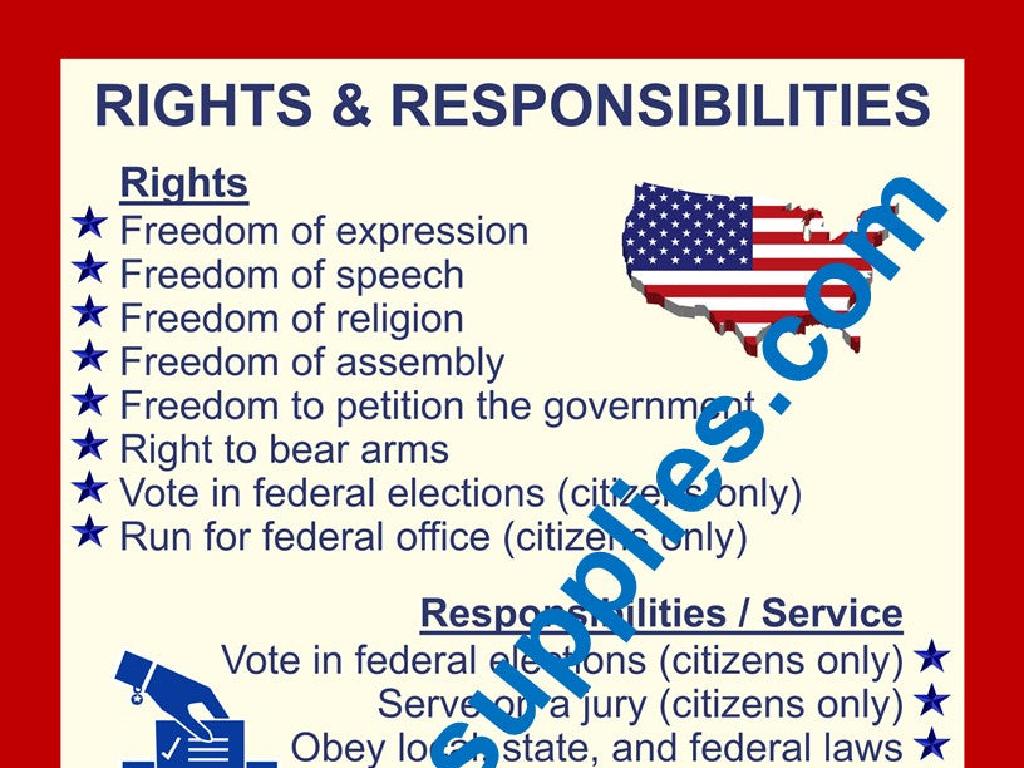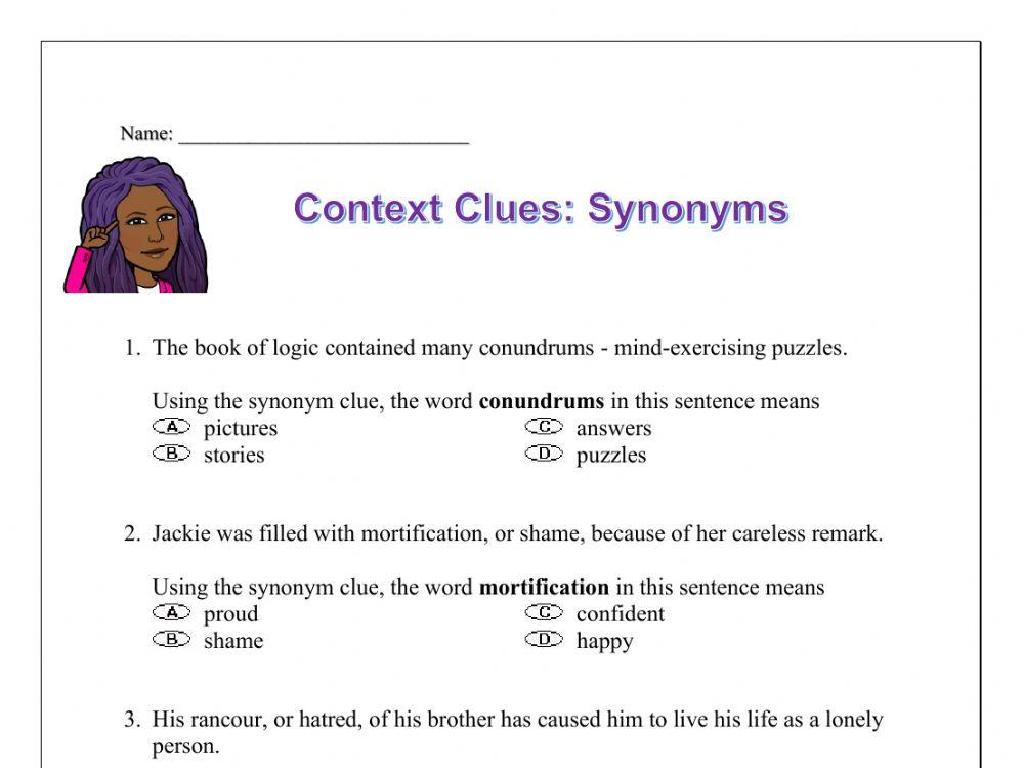Analyze Passages From A Long Walk To Water: Part 2
Subject: Language arts
Grade: Seventh grade
Topic: Novel Study
Please LOG IN to download the presentation. Access is available to registered users only.
View More Content
Exploring ‘A Long Walk to Water’: Part 2
– Introduction to the novel
– ‘A Long Walk to Water’ by Linda Sue Park
– Summary of Part 2
– Focus on Salva’s journey and survival
– Grasping the story’s context
– Set against the backdrop of Sudan’s conflict
– Analyzing key passages
– Examine characters’ development and themes
|
This slide introduces students to Part 2 of ‘A Long Walk to Water,’ a novel that intertwines the stories of two protagonists, Salva and Nya, set against the historical backdrop of Sudan’s conflict. Begin with a brief recap of the novel’s premise, then delve into the main events of Part 2, focusing on Salva’s continued journey and the challenges he faces. Discuss the context of the Sudanese conflict to provide students with a deeper understanding of the setting and its impact on the characters. Encourage students to analyze key passages for character development, themes, and the author’s message. Prepare discussion questions that prompt critical thinking and personal connections to the text.
Characters and Setting in A Long Walk to Water
– Meet Salva and Nya
– Salva: a young boy displaced by war, Nya: a girl who walks for water
– Explore Sudan’s setting
– Contrast between Sudan in the 1980s and 2000s through the characters’ eyes
– Challenges faced by characters
– War, displacement, survival, and the quest for clean water
– Resilience in adversity
– How Salva and Nya show courage and hope despite difficulties
|
This slide introduces students to the main characters of ‘A Long Walk to Water’ and the setting of Sudan in different time periods. Salva, a boy displaced by war, and Nya, a girl who walks long distances for water, face significant challenges that are emblematic of the struggles in Sudan. The discussion should focus on understanding the historical and geographical context of the story, as well as the personal hardships and resilience of the characters. Encourage students to empathize with Salva and Nya and to consider the impact of setting on a narrative. This will set the stage for deeper analysis of the text and its themes.
Exploring Themes and Motifs in ‘A Long Walk to Water’
– Identify novel’s key themes
– Themes like survival, hope, and resilience are woven throughout the story.
– Discuss water as a central motif
– Water symbolizes life and struggle; it’s essential to the characters’ journey.
– Relate themes to personal experiences
– Think of times when you faced challenges or had to persevere, similar to characters in the book.
|
This slide aims to delve into the deeper meanings within ‘A Long Walk to Water’. Students should look for recurring themes such as survival, hope, and resilience, and understand how these themes are developed throughout the novel. Discuss how water is not just a physical need but also a symbol that represents the struggles and hopes of the characters. Encourage students to draw parallels between the themes in the novel and their own life experiences, fostering a personal connection with the material. This will help them to better grasp the universal nature of the themes and how they apply beyond the story.
Analyzing ‘A Long Walk to Water’: Character and Language
– Read passages from Part 2
– Analyze character growth
– How characters change over time
– Motivations behind actions
– Why characters act as they do
– Author’s language and imagery
– Metaphors, similes, and descriptive phrases
|
This slide is aimed at guiding students through a deeper analysis of ‘A Long Walk to Water’ by Linda Sue Park. Students should focus on selected passages from Part 2, paying close attention to how the characters evolve throughout the story. Discuss what drives the characters to make the decisions they do and how their motivations are revealed through their actions. Additionally, explore the author’s use of language, including metaphors, similes, and vivid descriptions, to create a rich and immersive setting. Encourage students to think critically about how these elements contribute to the overall theme and message of the novel. Prepare to facilitate a discussion where students can share their insights and support their ideas with evidence from the text.
Exploring Literary Devices in ‘A Long Walk to Water’
– Identify similes and metaphors
– Similes compare using ‘like’ or ‘as’; metaphors do directly
– Personification in the narrative
– Giving human traits to non-human elements
– Understanding the impact of devices
– They add depth and evoke emotions
– Practice with a passage
– Find and discuss devices in a selected excerpt
|
This slide aims to deepen students’ understanding of literary devices within ‘A Long Walk to Water’. Begin by explaining similes and metaphors, highlighting how they compare things to add meaning or create a vivid image in the reader’s mind. Discuss personification and how it brings the text to life by attributing human characteristics to inanimate objects or abstract ideas. Emphasize the importance of these devices in enhancing the narrative and engaging the reader. Provide a passage from the book and guide students to identify and interpret the literary devices used. Encourage group discussion to explore different interpretations and foster a deeper appreciation of the author’s craft.
Group Discussion: Character Journeys
– Break into small discussion groups
– Share insights on characters’ experiences
– Discuss how the characters’ journeys shape their actions and decisions
– Prepare group findings for class
– Reflect on characters’ growth and challenges
– Consider how characters respond to adversity and change over time
|
This slide is meant to facilitate a group discussion among students about the characters in ‘A Long Walk to Water: Part 2′. Students should be divided into small groups to foster a more intimate and focused discussion environment. Each group will delve into the characters’ journeys, sharing their thoughts on how the experiences of the characters influence their development and decisions throughout the story. After the discussion, each group will prepare a summary of their insights to share with the entire class, promoting a collaborative learning experience. Encourage students to think critically about the characters’ growth, the challenges they face, and their responses to these challenges. This activity aims to enhance students’ analytical skills and deepen their understanding of the novel’s themes and character dynamics.
Role-Play Activity: Bringing the Novel to Life
– Role-play a novel scene
– Express characters’ emotions
– Use tone and body language to show feelings
– Reflect characters’ struggles
– Portray the challenges faced by the characters
– Discuss scene’s story impact
– How does this scene fit into the story’s bigger picture?
|
This class activity involves students working in groups to role-play selected scenes from ‘A Long Walk to Water: Part 2′. Encourage them to dive deep into their characters, understanding their emotions and the struggles they face. This will help students develop empathy and a deeper understanding of the characters’ experiences. After the role-play, facilitate a discussion on how the scene affects the overall narrative of the novel. Possible activities: 1) Assign different scenes to groups, 2) Have students write a brief reflection on their character’s perspective, 3) Create a ‘freeze-frame’ activity where students hold a pose that captures a moment from the scene, 4) Students can create a monologue from their character’s point of view, 5) Have a Q&A session where students ask questions to the characters (other students in role-play).
Reflective Writing on ‘A Long Walk to Water’
– Write a reflective paragraph
– Summarize your thoughts and feelings about the reading
– Connect to personal experiences
– How do the characters’ journeys relate to your own life?
– Share with a partner or class
– Exchange insights with peers to deepen understanding
– Discuss the impact of the story
– Reflect on how the story affects your view of the world
|
This slide prompts students to engage in reflective writing after reading ‘A Long Walk to Water’. They should think critically about the text and relate it to their own experiences, fostering a personal connection with the material. Encourage them to articulate their thoughts clearly in a paragraph. In sharing with classmates, students can gain new perspectives and insights. Facilitate a discussion afterwards to help them process the story’s themes and its emotional resonance. This activity not only enhances comprehension but also empathy and critical thinking skills.
Homework: Dive into ‘A Long Walk to Water’
– Read the next chapter at home
– Note new vocabulary and meanings
– Write the word, sentence it was used in, and the meaning you infer
– Think of questions or discussion points
– Consider character decisions, themes, or plot
– Get ready to discuss in class
|
This homework assignment is designed to enhance students’ reading comprehension and vocabulary skills while engaging with ‘A Long Walk to Water’. Students should focus on understanding the context in which new words are used to infer their meanings. Encourage them to think critically about the text and come up with meaningful questions or discussion points that relate to the themes, characters, and plot developments in the chapter. This will prepare them for a more in-depth and interactive discussion in the next class. Provide examples of discussion points, such as ‘Why do you think the character made that choice?’ or ‘What does this event tell us about the theme of survival?’ to guide their thinking.






